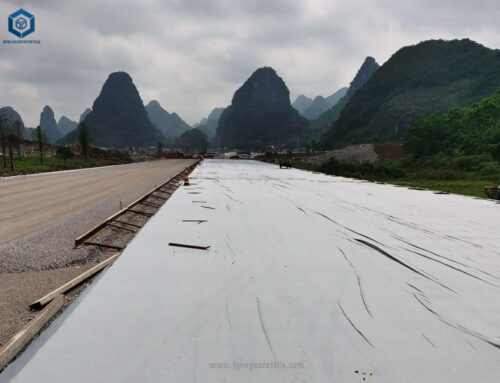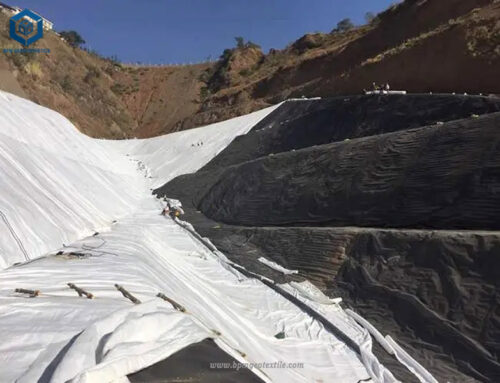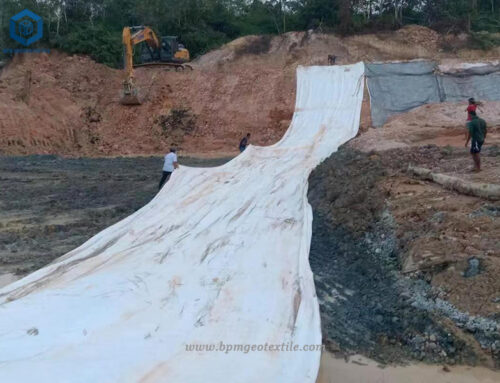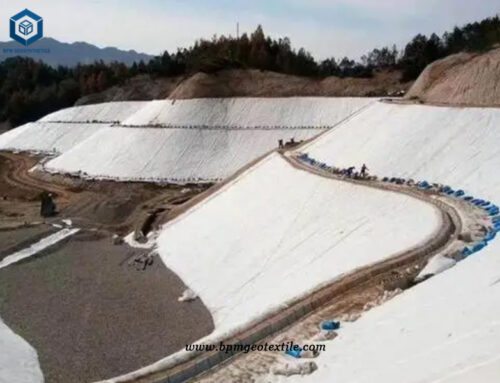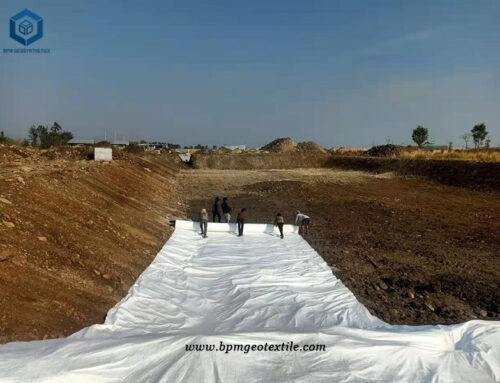Filament geotextile membrane, also known as filament non woven geotextile fabric, is the water permeable nonwoven geotextile fabric which is manufactured from the integrated extrusion and consolidation of 100% virgin polyester or polypropylene filaments and is formed by needle punched, thermally bonded processes to form a stable network that retains relational dimensional stability. Filament geotextile membrane has excellent tensile strength, high elongation and perfect uniformity to ensure superior performance, good damage resistance, and excellent filtration properties. Continuous filament non woven geotextile has good resistance to aging, acid and alkali corrosion, moisture and chemical attack, etc, it also has three-dimensional uniformly distributed physical properties in all directions, so it is the ideal geotechnical product for separation and protection applications.
Landfills are waste disposal facilities. There are many types of waste: domestic and municipal solid waste, industrial waste, polluting materials and hazardous waste. The goal of a landfill is to contain waste in a way that protects human health and the environment. Landfills perform volume by controlling and managing the movement of fluids (i.e. liquids and gases) around, in and out of the contained waste. Geosynthetics have two purposes in this application: 1. Basic barrier system function: Minimize leachate entering the foundation to prevent groundwater pollution 2. Cap system function: Control moisture filtration into waste, collect airflow from waste, Prevents odors and pathogens and meets erosion, aesthetic and other functional standards.
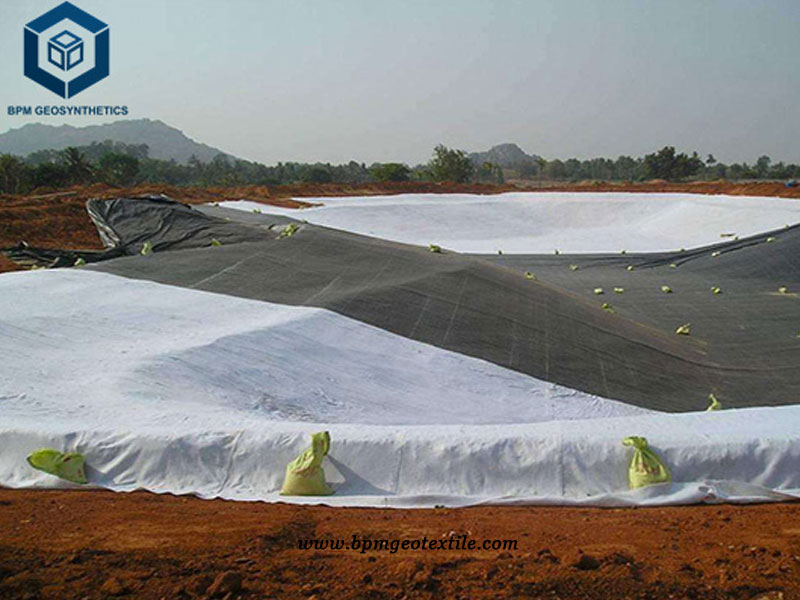
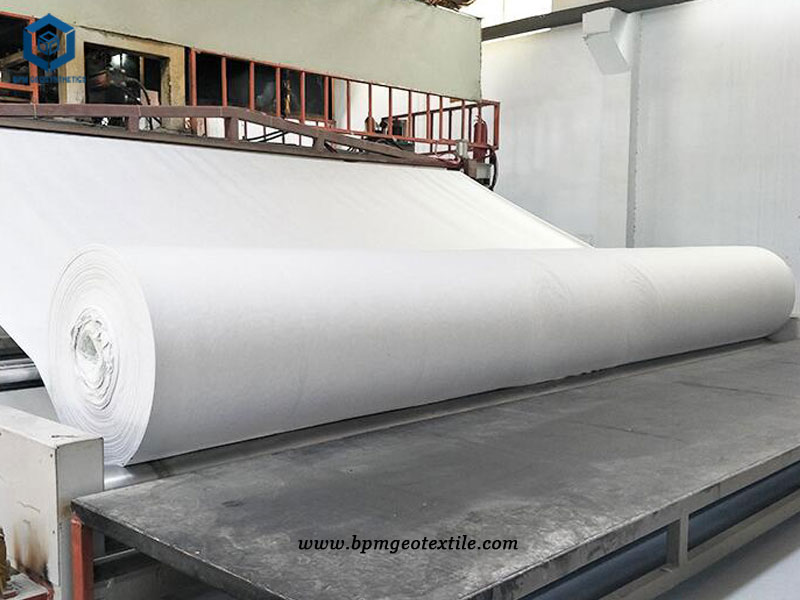
Case Study
- Destination – Thailand
- Products – Filament Geotextile, Geomembrane, Geosynthetics Clay Liner
- Project – Landfill
Issue
The disposal of domestic garbage generally adopts the sanitary landfill method to collect the garbage in the landfill. The landfill generally adopts the method of layered soil-filling to deal with the garbage. A layer of garbage is piled up and then covered with a layer of loess, which can easily reduce the pollution of the garbage. MSW landfills isolate waste from the surrounding environment (groundwater, air, and rainwater). This isolation is achieved through a liner such as a bentonite waterproofing blanket, polyester filament geotextile and polyethylene geomembrane at the bottom with daily soil mulching. The application of polyester filament geotextile in the landfill not only effectively protects the polyethylene anti-seepage geomembrane from external damage, but also prevents the settlement of the landfill due to garbage.
Solution
We received a Google inquiry from a Thai customer. The customer inquired about the price of filament geotextiles. In the communication with the customer, he learned that the customer won the bid for a government project of a domestic waste landfill in Thailand. Through communication with customers, we recommended geomembranes and Geosynthetics Clay Liner for landfills. It was finally determined that the Thai customer needed to purchase 300,000 square meters of filament geotextiles, geomembranes and Geosynthetics Clay Liner for the anti-seepage project of the landfill foundation. After understanding the customer’s needs, we recommended our company’s 600gsm filament geotextile, 1.5.mm geomembrane and 5000gsm Geosynthetics Clay Liner for customers, and sent pictures of landfill construction in other countries to customers. The customer asked us to send product samples for them to test, we sent sample of filament geotextile, geomembrane and Geosynthetics Clay Liner according to the customer’s request. After the customer’s test, the customer is very satisfied with the sample and signed a purchase contract with our company.
Indicators of Geotechnical Products for Landfills in Thailand
- Filament Geotextile
- Gram weight: 600g/sqm
- Total Quantity:300,000square meters
- Ross Size: 6m *50m
- Geomembrane
- Thickness: 1.5mm
- Quantity :300,000square meters
- Roll Size: 8m *50m
- Geosynthetics Clay Liner
- Gram weight: 5000g/sqm
- Total Quantity: 300,000square meters
- Roll Size: 6m *50m
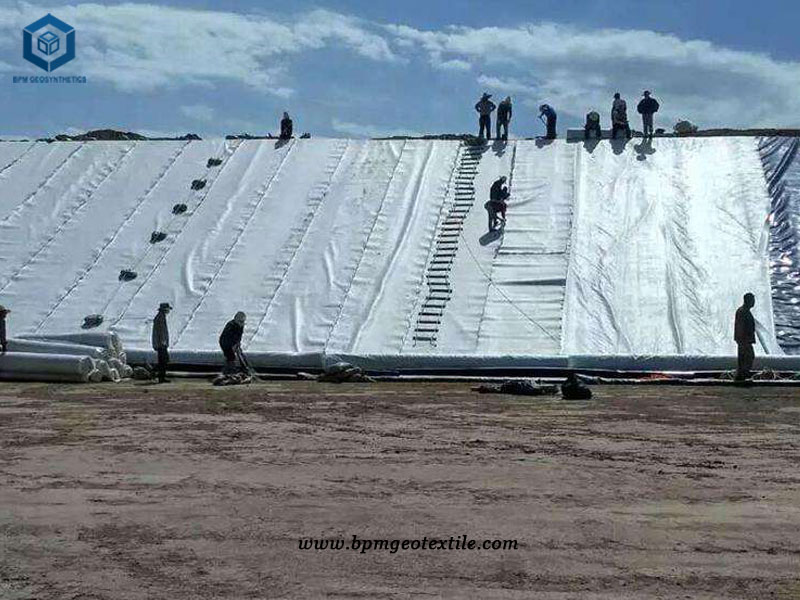
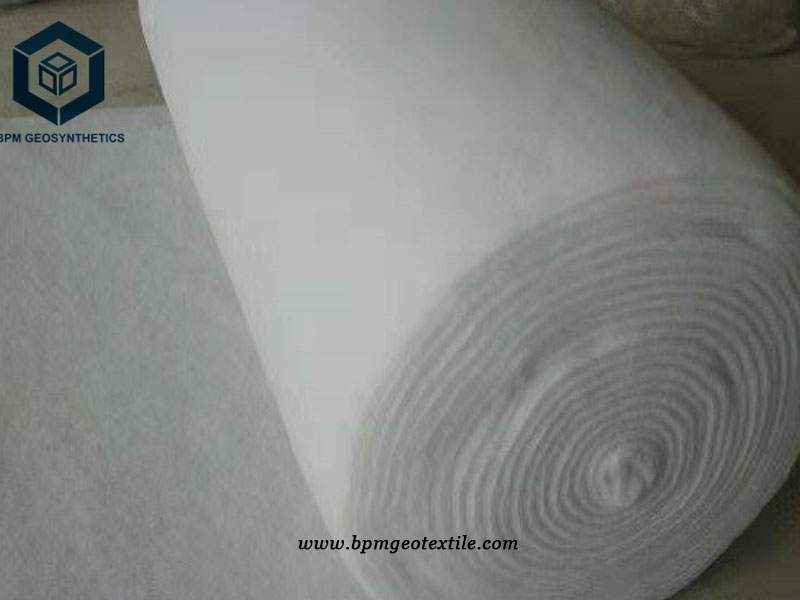
Benefits
The application of Filament Geotextile Membrane in the landfill project not only effectively protects the polyethylene anti-seepage geomembrane from external damage, but also prevents the settlement of the landfill due to garbage. Filament geotextile has good mechanical function, good water permeability, anti-corrosion, anti-aging, and has the functions of isolation, anti-filtration, drainage, protection, stabilization, reinforcement, etc. It can adapt to uneven base layers and resist construction external forces. Damage, creep is small, and the original function can still be maintained under long-term load.
Characteristics of Filament Geotextile Membrane
- High tensile strength, under the same gram weight, the longitudinal and transverse tensile forces are higher than other needle punched non-woven fabrics.
- Good elongation, the geotextile has good elongation under a certain stress, so that the geotextile can adapt to the uneven base.
- High temperature adaptation. The temperature of asphalt laid on the geotextile is generally around 165~170℃, while the non-woven geotextile begins to soften at around 210℃. Simultaneously. Geotextiles can still maintain structural integrity and keep physical properties unchanged.
- Good drainage performance and vertical permeability. Due to the large thickness of the non-woven geotextile and the needling reinforcement, it has good plane drainage performance and vertical permeability.
- Good anti-ultraviolet performance, non-woven PET geotextile has good anti-ultraviolet radiation performance, which ensures long service life.
- Good corrosion resistance: Non-woven geotextiles are resistant to different chemical substances such as acid and alkali, gasoline, diesel in the soil.
- Good anti-friction performance, the friction coefficient of the geotextile is higher than that of another conventional geotextile, and it is not easy to fluff and damage.
- Good creep resistance. Nonwoven geotextiles have good creep resistance and long-lasting functionality.
The Role of Geotextiles in the Ecological Environment
As a new type of building material in civil engineering, geotextile has the functions of reinforcement, filtration, drainage and reinforcement. It includes staple fiber needle-punched non-woven geotextiles and filament geotextiles. The raw materials are synthetic fibers of high molecular polymers such as polyester and polypropylene.
One of the roles of geotextiles in the ecological environment: geotextiles are suitable for greening on planes, slopes and high slopes, allowing moisture to flow between the bag and the soil in the bag, which is the moisture needed for vegetation loss, and it is absolutely necessary. No fruit or soil erosion due to rain. or watering. In addition, geotextiles are ideal seeding blocks for plants. It is permeable and impermeable to soil. Grass can grow from the outside and grow in the name. , Regarding friendly vegetation, the root system of the vegetation can grow between the bags and the bags, and the root system connects each non-woven geotextile into a whole, building a stable and permanent ecological slope.
The second role of geotextiles in the ecological environment: greening the ecological environment has always been the voice of society. Geotextiles have attracted public attention in this project. At the same time, the ecological slope protection engineering system uses raw materials to construct flexible slopes and retaining walls. , and complete the plane greening of the reservoir and the slope bank, which reflects the establishment of a conservation, energy saving, lively and breathable ecological project in the southern district. The project does not require hard materials such as steel, lime, and stone with high energy consumption and high pollution.
The third role of geotextiles in the ecological environment: geotextiles are used as reinforcing materials for asphalt pavements, which can prevent the pavement from cracking due to low temperature shrinkage, change the stress distribution of the pavement structure, prevent the expansion of reflective cracks, and reduce rutting marks. After the surface chemical treatment of the glass fiber geotextile, the surface properties of the glass fiber are improved, and the adhesion between the glass fiber and the asphalt is enhanced, so that it can be contacted with the asphalt mixture at a high temperature of 160 ℃ without cracking and warping. It has good construction performance, can prolong the service life of the road, and can also reduce the large thickness of the pavement structure layer, so as to achieve the purpose of reducing road construction and reconstruction.
The fourth effect of geotextiles on the ecological environment: geotextiles, as a multi-functional product, can reduce or even avoid secondary pollution. Non-woven geotextiles have good water permeability and breathability. It can be buried in fill waste. Improve the acceptance conditions for filling waste, enhance the tensile strength and deformation resistance of the filling, and improve the stability of the project structure. Non-woven geotextiles under the correct conditions of use. The anti-seepage layer adopts needle-punched non-woven geotextile and HDPE geomembrane as engineering materials. The anti-seepage layer is designed to slow the infiltration of polluted wastewater and the migration of pollutants, while guiding the drainage layer to discharge wastewater.
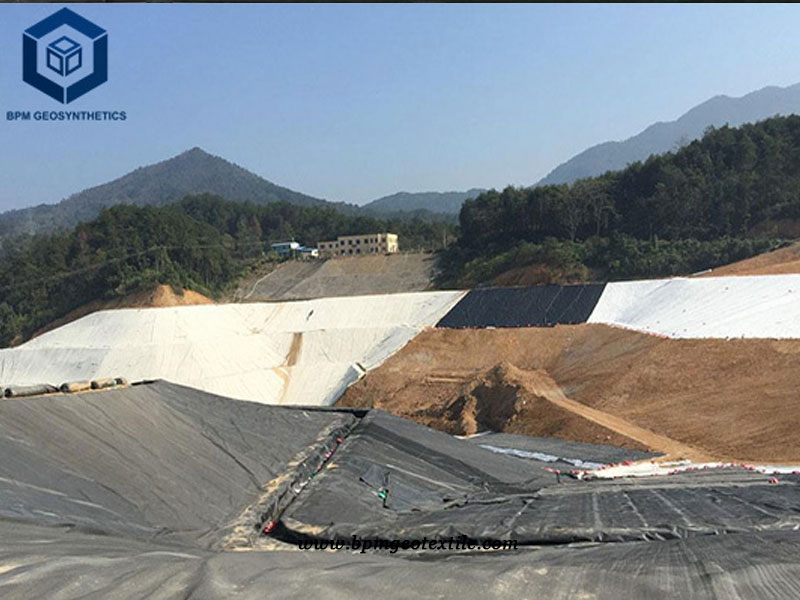
About BPM
BPM manufactures and wholesales many types of effective and states of the art geotextile, geomembrane, and other geosynthetics to over 36 countries. BPM geosynthetic products are widely used across a variety of industries including waste containment, water containment, aquaculture, industrial project, energy project and mining projects, etc. BPM main customers are from Australia, France, Sweden, UK, Hungary, New Zealand, Poland, Mexico, Ecuador, Brazil, Pakistan, Bangladesh, Thailand, Vietnam, Malaysia, Indonesia, Singapore, Philippines, Sri Lanka, India, UAE, Saudi Arabia, Qatar, Kenya, etc.
BPM is not only manufacturing best quality geosynthetic products but also providing professional design and installation service. OEM, ODM, custom development and fabrication are also available. If you have any questions or inquiries, please fill and submit the following form, we will reply as soon as possible.

